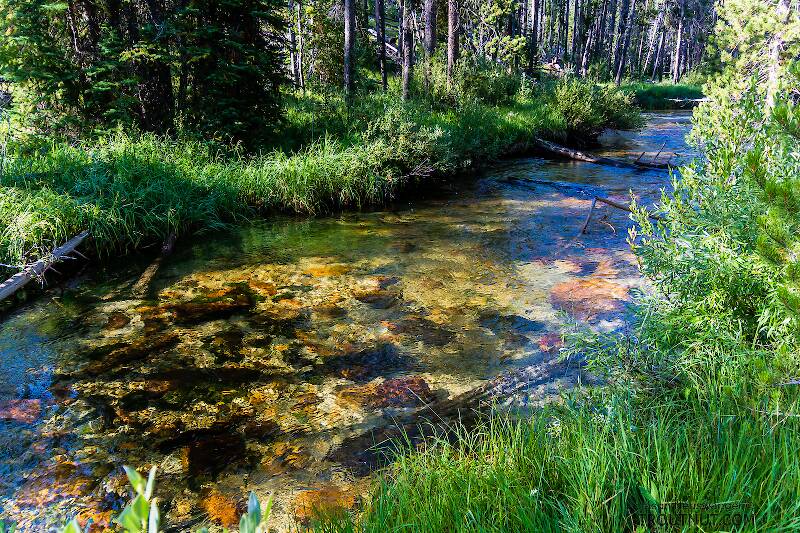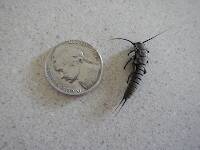
Salmonflies
Pteronarcys californica
The giant Salmonflies of the Western mountains are legendary for their proclivity to elicit consistent dry-fly action and ferocious strikes.
Featured on the forum

This specimen resembled several others of around the same size and perhaps the same species, which were pretty common in my February sample from the upper Yakima. Unfortunately, I misplaced the specimen before I could get it under a microscope for a definitive ID.

Troutnut is a project started in 2003 by salmonid ecologist Jason "Troutnut" Neuswanger to help anglers and
fly tyers unabashedly embrace the entomological side of the sport. Learn more about Troutnut or
support the project for an enhanced experience here.
By Troutnut on July 7th, 2013
Our third day hiking was wet and cold all the way through. The temperature was in the forties (Fahrenheit) and the cold drizzle didn't stop all day. We had decent raingear, but it's impossible to keep everything dry in this weather. My wife Lena didn't have waterproof boots, so her feet got soaked, and I ended up with water sloshing around in my boots after ferrying her and all our stuff across an unexpectedly rain-swollen creek. We had long since given up on our original plan to complete the hike in three days, and covered plenty of ground on day three just to make a four-day finish viable.
Photos by Troutnut from Clearwater Mountains in Alaska
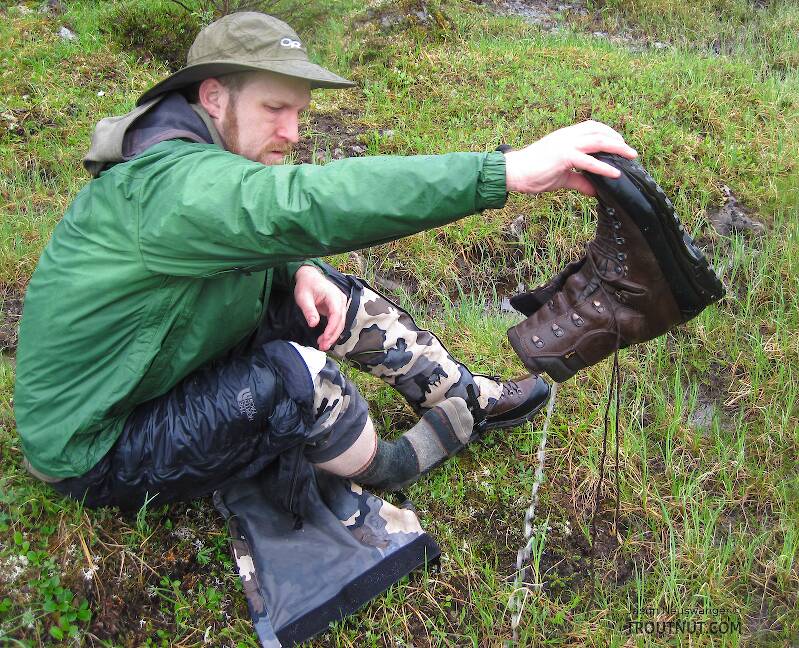
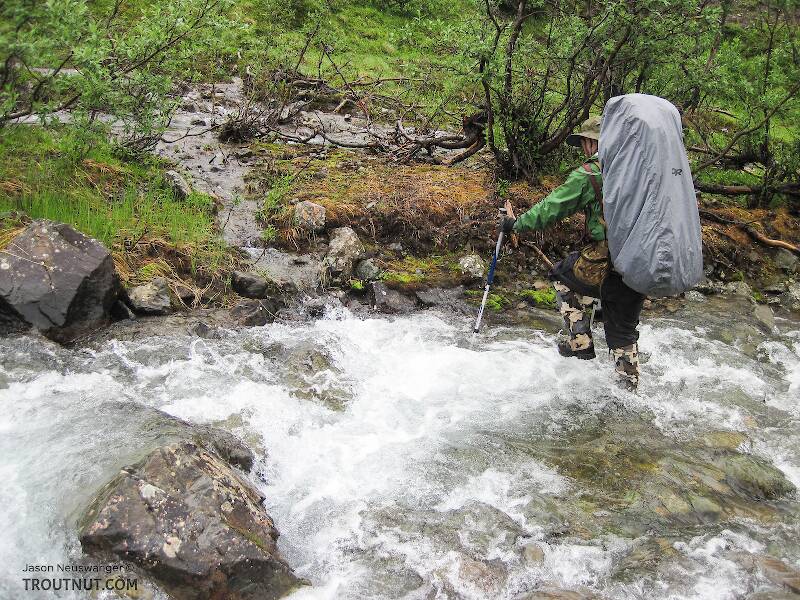
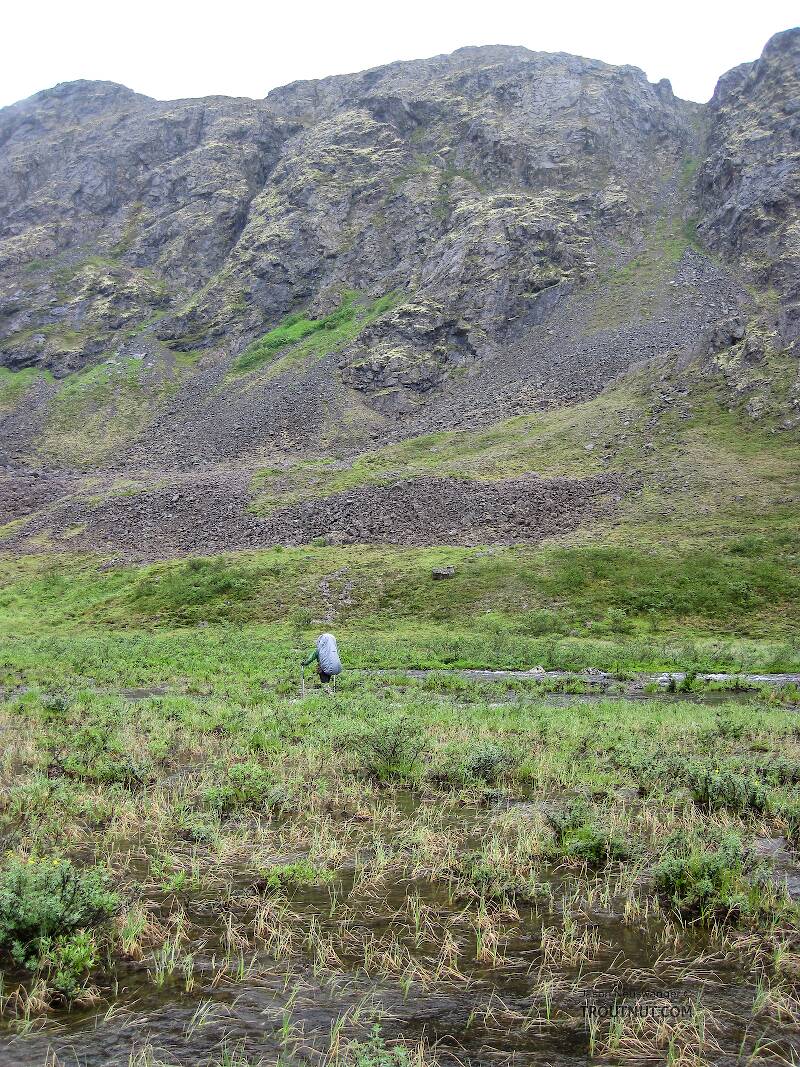
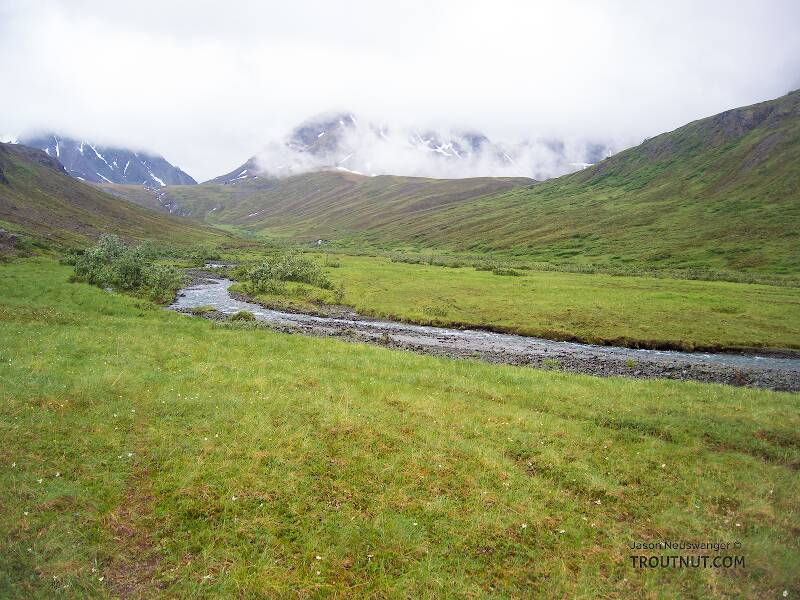
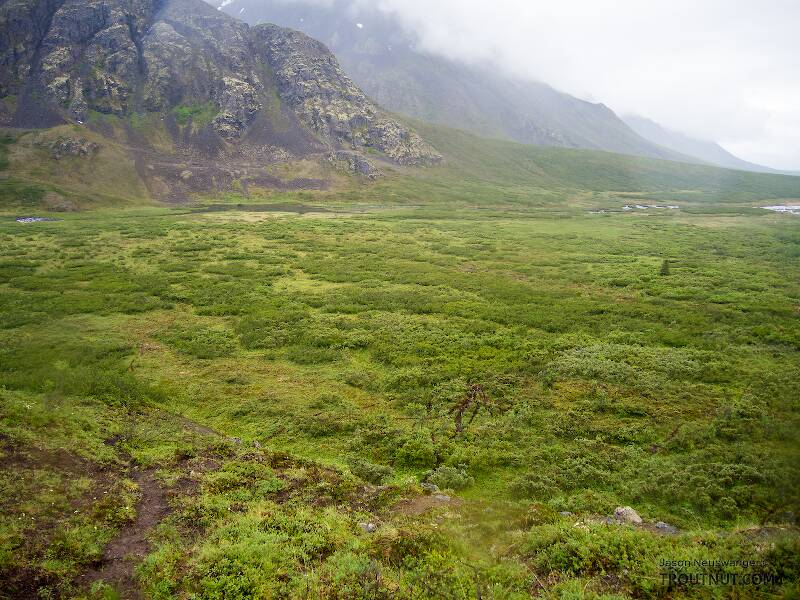
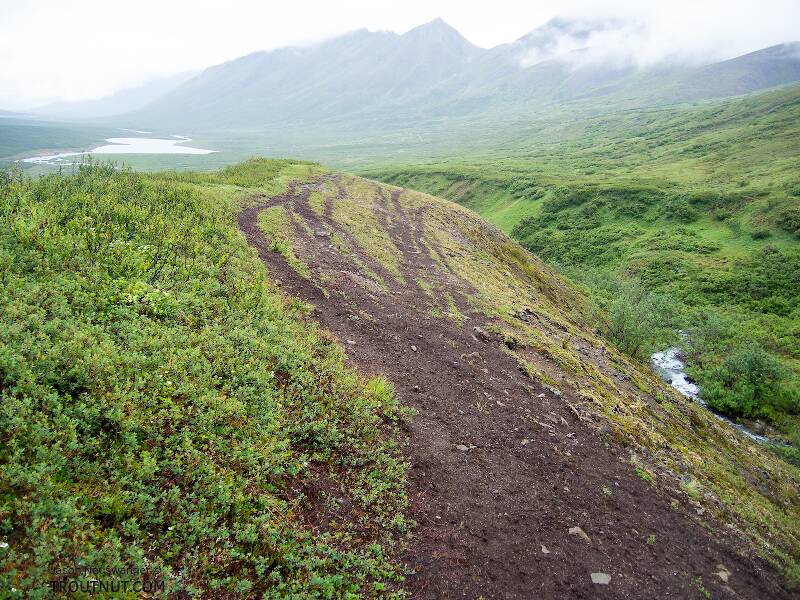
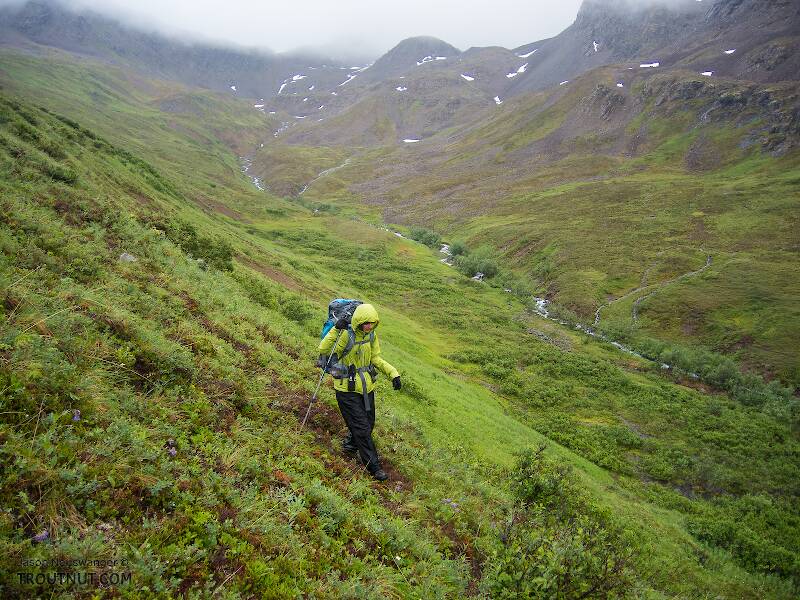
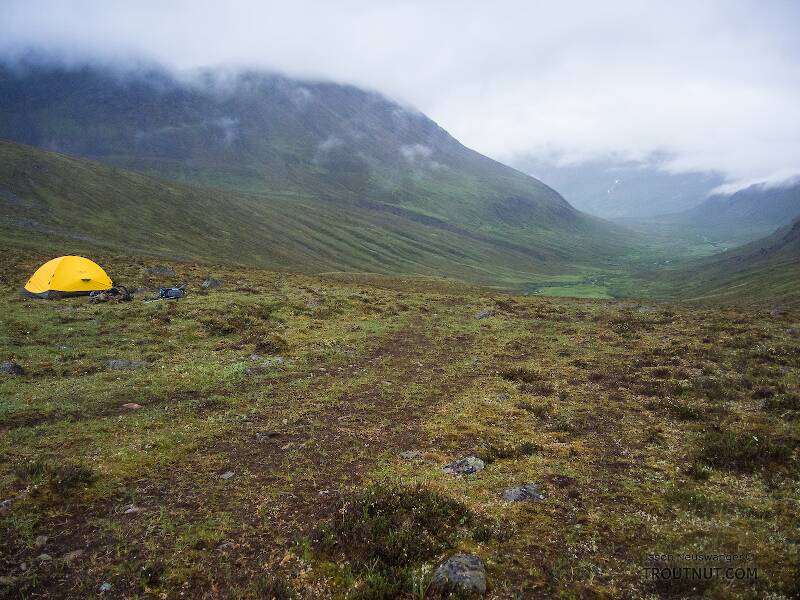
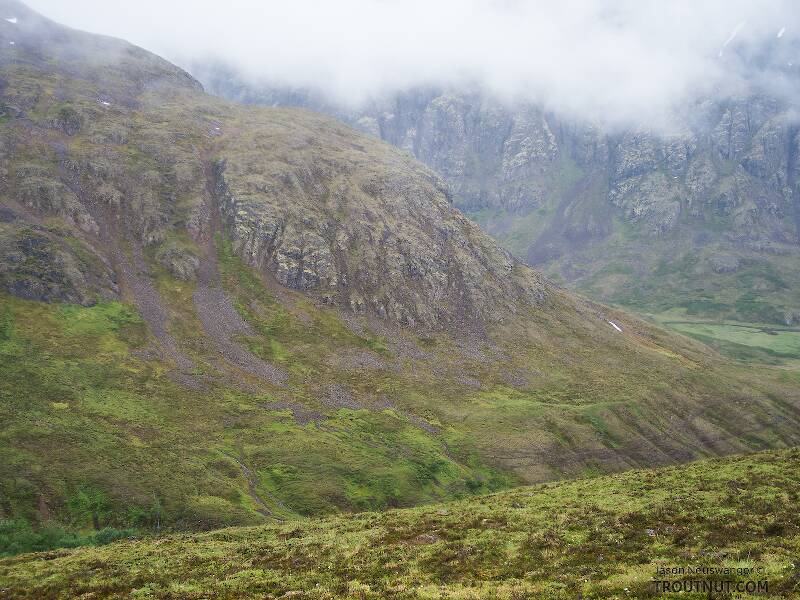
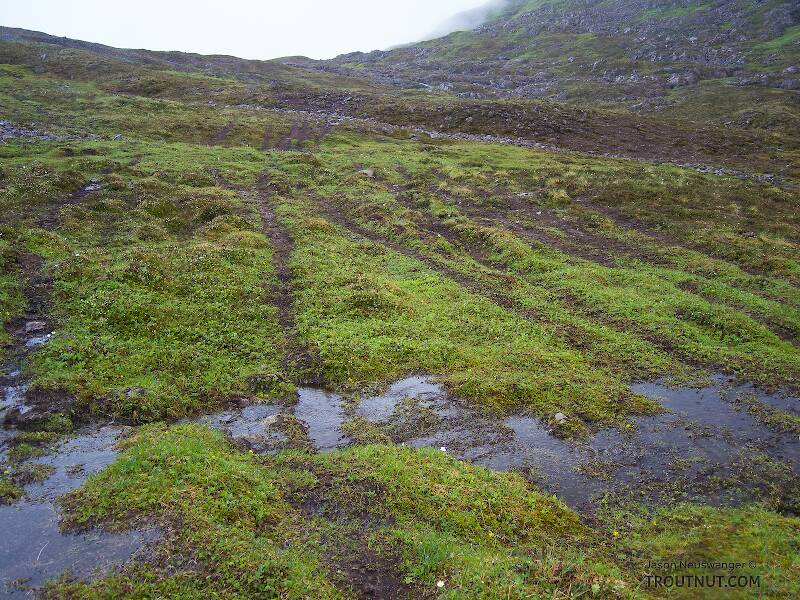
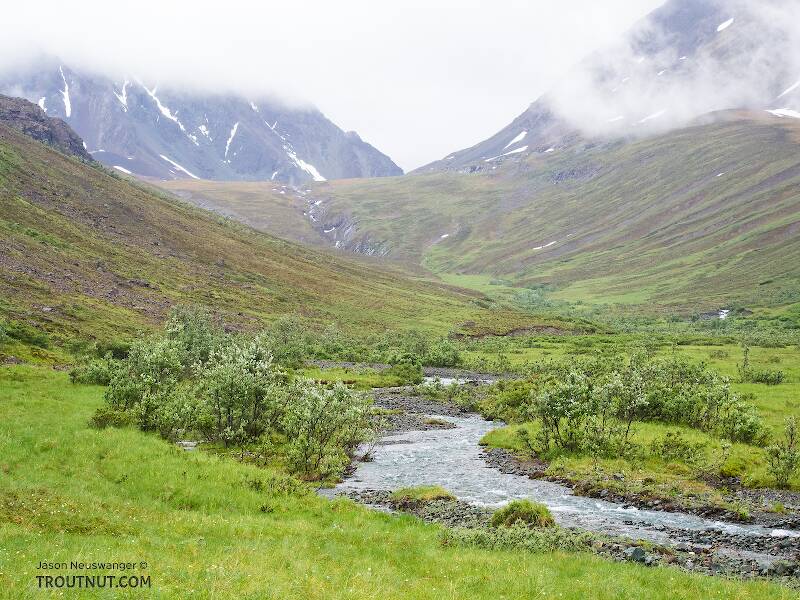
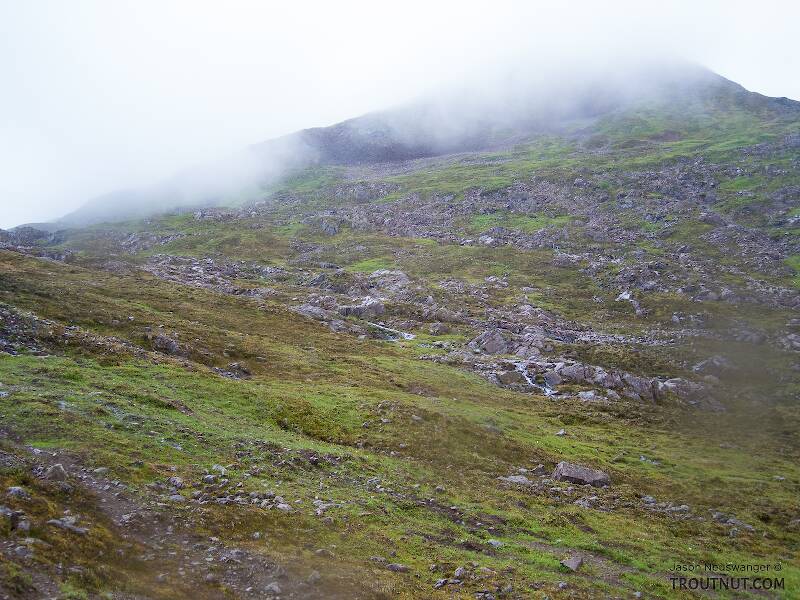
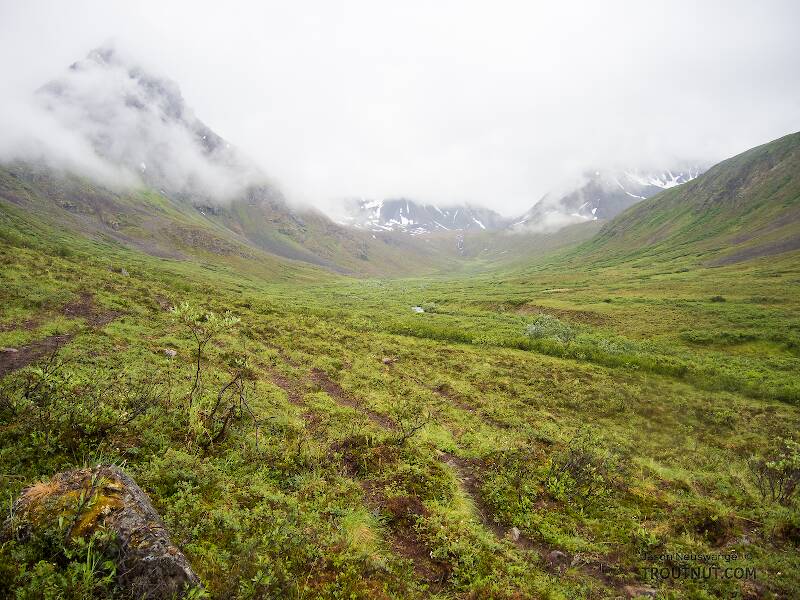
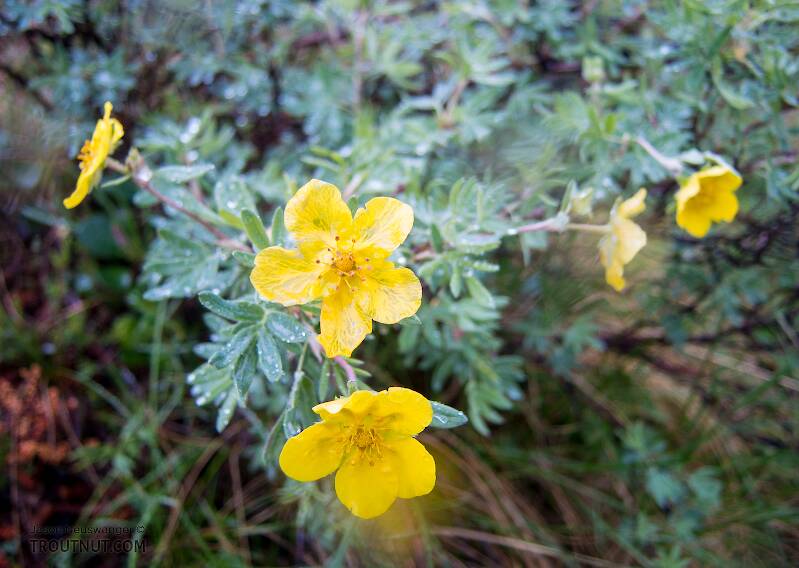
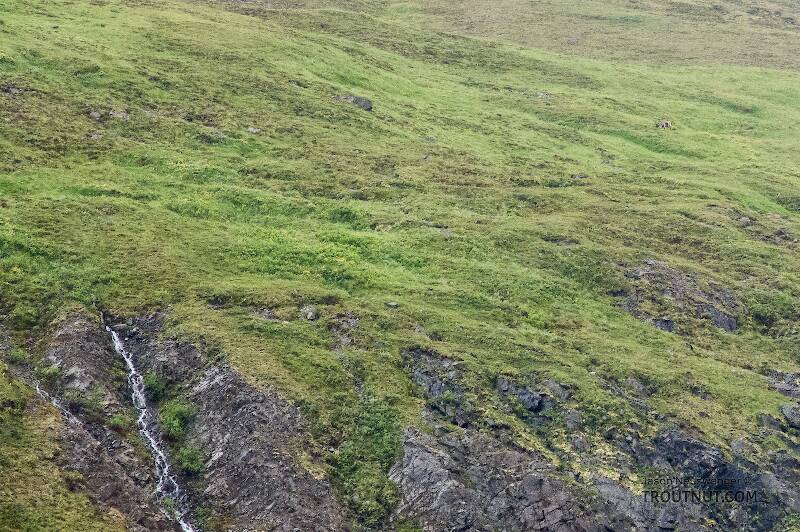
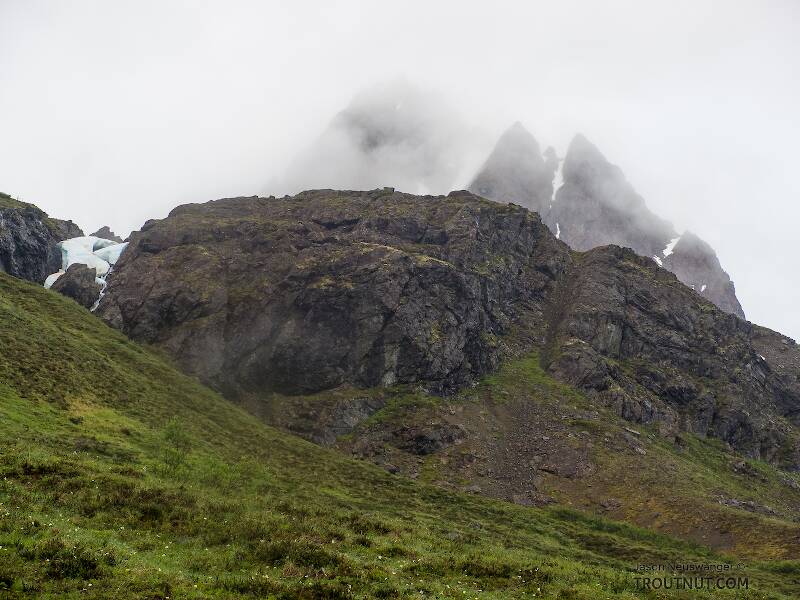
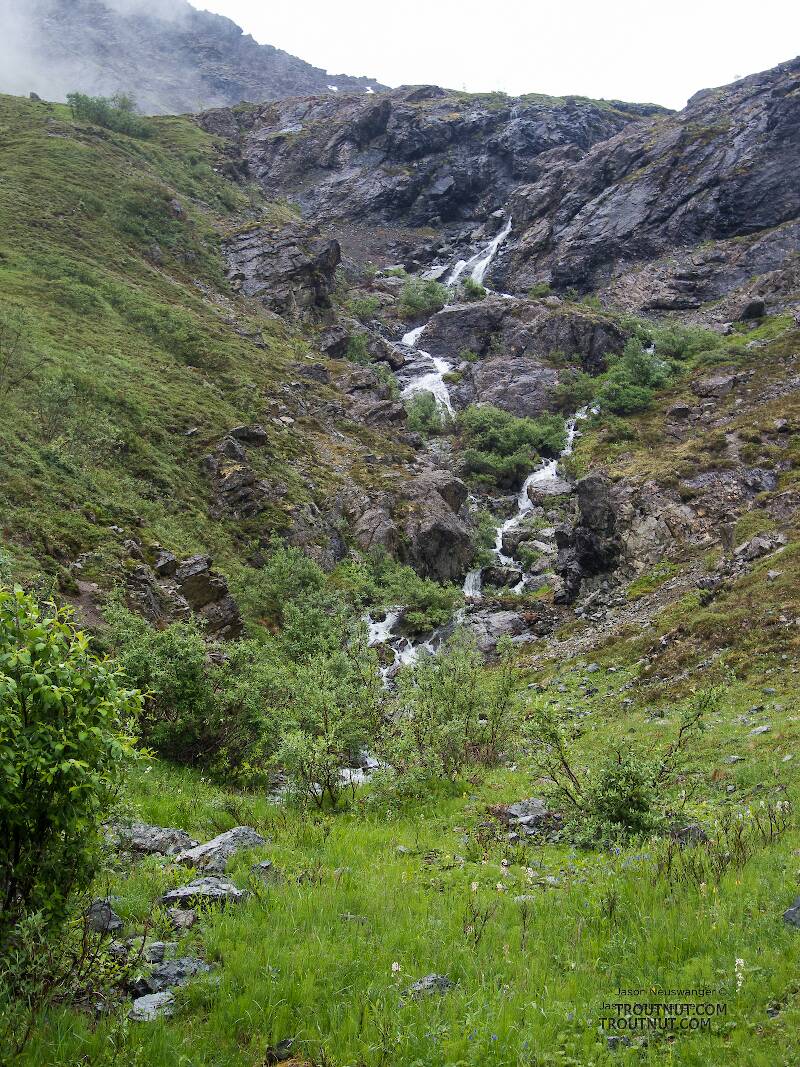
Comments / replies
Jmd123 on Jul 31, 2013July 31st, 2013, 7:16 pm EDT
WOOOOOOOOOOOOOOOOOOWWWWWWWWWWWWWW, Jason this stuff is just really mind-blowing!! Too bad is was sooooo damned cold and wet but the scenery is just beyond belief...BTW, what you call "tundra rose" up there, Potentilla fruticosa, is called "shrubby cinquefoil" here in Michigan, and it is considered a "calciphile", a plant that loves an alkaline, high-calcium soil, as in fens or alkaline wetlands. In fact, we saw it in bloom on our last field trip in my Field Biology class today (their final exam is next Wednesday) to a wonderful place called Tuttle Marsh (one of Spence's favorite birding places!). Yep, learned that one in my Boreal Flora class 29 years ago...
Jonathon
Jonathon
No matter how big the one you just caught is, there's always a bigger one out there somewhere...
Quick Reply
Related Discussions
Topic
Replies
Last Reply
Re: Those "green fish" - and a yellow one, and some orange & blue ones too! 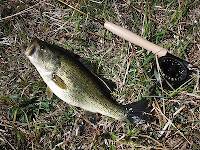
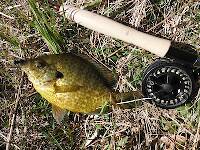
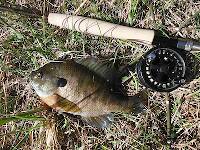
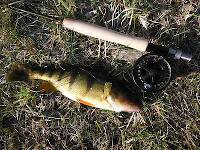
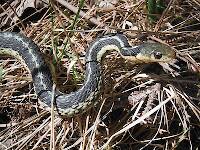
In the Photography Board by Jmd123
+ 3





In the Photography Board by Jmd123
5
Apr 28, 2016
by Jmd123
by Jmd123
1
Mar 31, 2008
by Lifeaquatic
by Lifeaquatic

